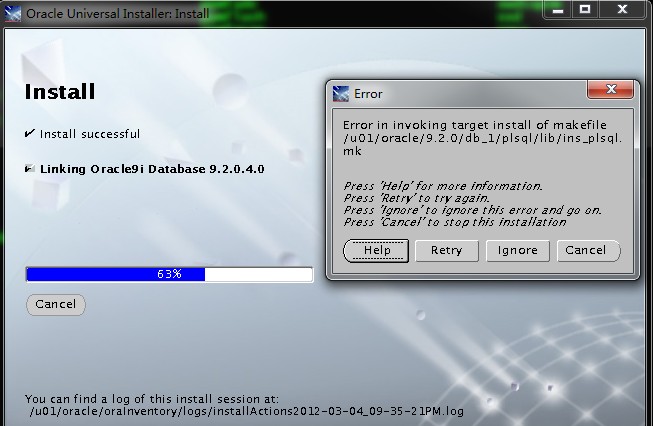LNNVL官方解释
LNNVL provides a concise way to evaluate a condition when one or both operands of the condition may be null. The function can be used only in the WHERE clause of a query. It takes as an argument a condition and returns TRUE if the condition is FALSE or UNKNOWN and FALSE if the condition is TRUE. LNNVL can be used anywhere a scalar expression can appear, even in contexts where the IS [NOT] NULL, AND, or OR conditions are not valid but would otherwise be required to account for potential nulls. Oracle Database sometimes uses the LNNVL function internally in this way to rewrite NOT IN conditions as NOT EXISTS conditions. In such cases, output from EXPLAIN PLAN shows this operation in the plan table output. The condition can evaluate any scalar values but cannot be a compound condition containing AND, OR, or BETWEEN.

LNNVL官方解释翻译
lnnvl用于某个语句的where子句中的条件,如果条件为true就返回false;如果条件为UNKNOWN或者false就返回true。该函数不能用于复合条件如AND, OR, or BETWEEN中。
模拟测试环境
SQL> create table xifenfei(name varchar2(20),year number);
Table created.
SQL> insert into xifenfei values('xifenfei2001',2001);
1 row created.
SQL> insert into xifenfei values('xifenfei2002',2002);
1 row created.
SQL> insert into xifenfei values('xifenfei2003',2003);
1 row created.
SQL> insert into xifenfei values('xifenfei2004',2004);
1 row created.
SQL> insert into xifenfei values('xifenfei2005',2005);
1 row created.
SQL> insert into xifenfei values('xifenfei2006',2006);
1 row created.
SQL> insert into xifenfei values('xifenfei2007',2007);
1 row created.
SQL> insert into xifenfei values('xifenfei2008',null);
1 row created.
SQL> insert into xifenfei values('xifenfei2009',2009);
1 row created.
SQL> insert into xifenfei values('xifenfei2010',2010);
1 row created.
SQL> insert into xifenfei values('xifenfei2011',2011);
1 row created.
SQL> commit;
Commit complete.
SQL> select * from xifenfei;
NAME YEAR
-------------------- ----------
xifenfei2001 2001
xifenfei2002 2002
xifenfei2003 2003
xifenfei2004 2004
xifenfei2005 2005
xifenfei2006 2006
xifenfei2007 2007
xifenfei2008
xifenfei2009 2009
xifenfei2010 2010
xifenfei2011 2011
11 rows selected.
几种情况测试说明
--年份小于2009(lnnvl表示年份大于或者2009包含null) SQL> select * from xifenfei where lnnvl(year<2009); NAME YEAR -------------------- ---------- xifenfei2008 xifenfei2009 2009 xifenfei2010 2010 xifenfei2011 2011 --year不为null(lnnvl表示年份为null) SQL> select * from xifenfei where lnnvl(year is not null); NAME YEAR -------------------- ---------- xifenfei2008 --年份为null(lnnvl表示年份不为null) SQL> select * from xifenfei where lnnvl(year is null); NAME YEAR -------------------- ---------- xifenfei2001 2001 xifenfei2002 2002 xifenfei2003 2003 xifenfei2004 2004 xifenfei2005 2005 xifenfei2006 2006 xifenfei2007 2007 xifenfei2009 2009 xifenfei2010 2010 xifenfei2011 2011 10 rows selected. --年份为12345(lnnvl表示年份不为12345) SQL> select * from xifenfei where lnnvl(year =12345); NAME YEAR -------------------- ---------- xifenfei2001 2001 xifenfei2002 2002 xifenfei2003 2003 xifenfei2004 2004 xifenfei2005 2005 xifenfei2006 2006 xifenfei2007 2007 xifenfei2008 xifenfei2009 2009 xifenfei2010 2010 xifenfei2011 2011 11 rows selected. --年份不为12345(lnnvl表示年份为12345或者null) SQL> select * from xifenfei where lnnvl(year !=12345); NAME YEAR -------------------- ---------- xifenfei2008


